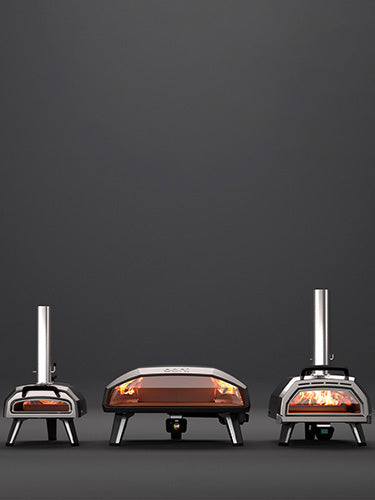Cast-Iron Dimpled Fougasse with Kumquats and Olives

Save 20% on selected Koda 2 Max Bundles for a limited time only. Shop now.
Save 20% on selected Koda 2 Max Bundles for a limited time only. Shop now.
A revolution in mixing has landed. Shop the Halo Pro Spiral Mixer now.
A revolution in mixing has landed. Shop the Halo Pro Spiral Mixer now.
You say potay-to, I say pot-ah-to. You say focaccia, I say fougasse. Fougasse is often described as the southeastern French equivalent of Italian focaccia, a classic country bread from Provence (a warm region in southwestern France) made with a wet dough, often repurposed (from baguettes or sourdough, for instance). The characteristic shape of fougasse — usually resembling sand dollars, a ladder, or (most often) a triangular leaf with a long central “vein” cut surrounded by short angled ones —sets it apart visually from focaccia, with the added benefit of creating more surface area and thus more crispy crust.
We turned to our friends at Le Mary Celeste, the famed Parisian oyster and cocktail bar in the 4th arrondissement’s fashionable Marais district, to bring their take on this classic French bread to life in their Ooni oven. (The spot is named after a famous 19th-century ghost ship that sailed from New York and was found adrift and abandoned with just alcohol aboard, but after testing this recipe ourselves, we can’t help but reimagine the bread there.)
This crispy fougasse is served daily at Le Mary Celeste as an alternative to the simple sourdough they receive from the local boulangerie. We can vouch that it's also delicious the next day, toasted (if there’s any leftover). We particularly enjoy the contrasting flavors of the garnish, the sweet confit kumquats and salty olives battling it out with each bite through the crunchy herbed surface, oil-crisped bottom, and soft, springy center.
We’ve demonstrated a simple approach shape-wise to fougasse in this recipe but feel free to reduce the amount of dough by a quarter and experiment with different patterns of slits. Just use a metal bench scraper or pizza cutter to slice straight through (five slits radiating outward, four parallel cuts, or one central “vein” cut with small angled parallel slits radiating outward) and gently pull the cuts a bit apart without pressing the dough.
Note: The pan and bread get very hot, so be sure to keep a pair of oven gloves nearby, and use the removable metal handle if cooking with an Ooni cast-iron skillet.
Serves 5 to 6 as a side
Active time: 10 to 15 minutes Proof time: 2 hours
By



Get exclusive recipes, tips, and special offers straight to your inbox. Subscribe now and receive 10% off your first purchase.
*Valid for 30 days on orders over €100 on https://eu.ooni.com/ (not valid with retailers). First time subscribers only. Single use and non-transferable. Excludes bundles, Ooni Halo Pro and gift cards. Future product releases may be excluded from this promotion. This code cannot be used in conjunction with other discounts. By submitting this form you consent to receive marketing emails and to Ooni processing of your data. Your data is safe with us, see our Privacy Terms.
Pay Securely With
